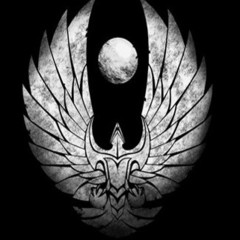-
Posts
377 -
Joined
-
Last visited
Awards
This user doesn't have any awards
About RossMadness
- Birthday Apr 16, 1990
Contact Methods
-
Steam
RossMadness
-
Twitter
@RossMadness
Profile Information
-
Gender
Male
-
Location
Texas
-
Interests
Computers, writing, reading Ray Bradbury.
-
Occupation
Level I Network Technician
System
-
CPU
i7-3770k
-
Motherboard
ASRock Z77 Extreme6
-
RAM
16 GB (2x8) HyperX Fury
-
GPU
EVGA GTX 960 4GB
-
Case
Corsair 760t
-
Storage
Toshiba THNSJ128, WD Blue 1 TB HDD
-
PSU
Corsair CX750M
-
Display(s)
BenQ GL2760H
-
Cooling
ThermalTake Extreme 3.0
-
Keyboard
Razer Black Widow Essential
-
Mouse
Razer Deathadder 2013
-
Sound
Onboard
-
Operating System
Antergos (Arch) Linux
Recent Profile Visitors
2,510 profile views
RossMadness's Achievements
-
Time for my annual sojourn through the troubleshooting page before I log off for another year. Lol
-

Laptop Win Vista (yes) stuck at startup repair loop
RossMadness replied to kee23's topic in Troubleshooting
So before running chkdsk again, do a HDD diagnostic. If it's a bad HDD then running chkdsk repair could destroy data. Check your boot options and your BIOS to see if the manufacturer has included a diagnostic tool. If not, Seagate Seatools and WD Data Lifeguard both have bootable tools to do diagnostics. If the HDD is verified as fine, then run chkdsk /f /r This will attempt to repair the file system and fix any bad sectors. Again, run the diagnostic tool FIRST. If the diagnostic fails then focus on doing data recovery. We can talk about those options in another post once you've had a chance to run the diagnostics.- 4 replies
-
- laptop
- bad sector
-
(and 2 more)
Tagged with:
-

I almost cried... - Fixing the $40,000 PC Part 2
RossMadness replied to nicklmg's topic in LTT Releases
The problem I've had with this series is the haphazard why he's approaching this. I think it's a great experiment, and if I had the hardware I would try it too. However his troubleshooting steps don't make sense. Start with one GPU and one VM. Get it working then add another. Also, don't try porting over other VMs. Clean install each one. That's not necessary, but is optimal. This is basic troubleshooting and project management. You don't throw 6 GPUs of all different types in at once and then try and troubleshoot the abundance of errors that could take place. Setting all the hardware out in the open and stacked on top of each other is the icing on the cake. I really like watching troubleshooting videos. I do computer repair and system management for a living and I enjoy seeing solutions other people come up with so I can have them in my back pocket just in case. This has been maddening though. It makes for a confusing video and ruins the excitement of the project itself. I just about screamed "FINALLY" into the void when he said it was time to go "back to basics" and install everything "part by part". Linus, I doubt you'll see this, but for my sanity please review troubleshooting methods that help efficiently eliminate variables. It will make your life easier and might even make for a good tech quickie video at some point. -

Computer is hanging on the Asrock splash screen
RossMadness replied to zephyrus34's topic in Troubleshooting
I have an older ASRock board and it doesn't come with a motherboard speaker installed. That was in the box and I had to install it myself. I would double check that just in case. I would remove everything that isn't necessary and just boot using CPU, RAM, (and GPU since your CPU doesn't have integrated graphics). Does it get into the BIOS/UEFI successfully? If so, then slowly add parts such as HDD, SSD, GPU, etc and try a boot after each one. This could help narrow down a troublesome part or where some tuning in the BIOS/UEFI is required. Also, that's a beefy Graphics card. If possible, use a less power hungry GPU while doing these tests. Also, 550 watts seems too low for this system, especially with the 1080 hybrid, and the AIO for the CPU and all of the RGB fans and RGB ram. I would try upgrading to a 700+ watt PSU and see if that helps. (Most stores will let you return the PSU within a certain time period so if it doesn't help then just return it). Good luck. -

USB ports wont work for a few minutes after booting windows.
RossMadness replied to Lethalmonk's topic in Troubleshooting
If they work outside of Windows then it's most likely an OS issue. As mentioned by @barondeau, you can open Device Manager and right-click on the USB hardware. Select "uninstall driver" from the context menu. This should reinstall the driver from the Windows driver store (assuming that isn't corrupt). For general OS health, you can run SFC /SCANNOW from command prompt. If Windows 8 and up, you can also run DISM /ONLINE /CLEANUP-IMAGE /RESTOREHEALTH to check the drivers, driver store and some other Windows system functions against Microsoft's Windows Update store online. Again, this is all just general health stuff. Start with uninstalling the drivers from Device Manager first. I only mentioned the other options because you had shown concern about the search not working either. -

Help. Windows Won't Install - Out of tricks
RossMadness replied to Computernaut's topic in Troubleshooting
I have several questions. You may have answered them already, but I didn't see it in the thread. When you say "it gets to the part with 'Starting Windows'" are you saying that you have completed the installation and are now booting to the internal HDD/SSD? If so this may not be an issue with the installation media. It may be the drive you're installing it on. Run a diagnostic on the drive and see if it's bad. If it's an OEM machine, they usually have some tool to boot to (for exampe, HP has diagnostics available in the BIOS or by hitting F2 on boot, depending on the age of the computer). Seagate Seatools and WD Data Lifeguard both have bootable disk diagnostics. If you aren't even able to reach the install screen, but are having problems booting to the install disc, then I have other questions. You said "it wouldn't let me put it on a usb drive". Where did you get the ISO? What are you using to write it to the USB drive? How big is the drive? If you have an official ISO (or made an ISO of the official disc), I recommend using Rufus to create the bootable USB. It's very reliable and I've had better success with it than Microsoft's own utility. MS recommends at least an 8 GB USB but I always recommend 16 GB just in case. -
The website cybrary.it is a good one for a variety of topics. I haven't looked specifically at their A+ stuff, but I've used their Linux+ and Network+ courses and they were good. It all depends on the expert that made the course.
-
My brother-in-law had this issue the other day. I advised him to use Rufus and the Windows 10 ISO to create the boot USB instead of the Media Creation Tool. It worked like a charm.
-
-
For me, I bought a book from the "Exam Cram" series that was very thorough and it came with a CD of practice questions. I also used https://www.professormesser.com/ . This guy is a multi-decade veteran of the IT industry and has comprehensive series on different certifications including weekly live streams where you can ask questions. I've used him for the Network+ and Linux+ studies as well, but I have yet to take those exams.
-
A+ Certified tech, here. You don't NEED it, but like @Oshino Shinobu said, it helps make your resume that more convincing. For me, I don't have a college degree so it made a HUGE difference in my job opportunities because it validated my knowledge. The great thing about working in tech jobs is that certifications are often looked at as equivalent to degrees in some positions. So you can get more certs moving forward and just makes you a more desirable hire. PLUS the A+ is two tests at 200 dollars a test. So if you can get your school to pay for that, then you DEFINITELY need to do it. Way better than 400 bucks out of pocket.
-
The problem is driver support. The OS will not run natively because neither Microsoft nor the hardware manufacturers support XP anymore. You can run XP in a VM, but that still means your grandpa will have to use Win10 just to even get that far. Honestly, I would install 10 and customize the crap out of the Start Menu and walk him through what's new. Unless you can salvage his old hardware and just refurb the old machine. Sorry to be the bearer of bad news. Good luck.
-
Determined to finally finish Tomb Raider (2013). Got a can of Monster and a day off. This is going to be a long night.
-
I can guarantee you that Windows XP doesn't have drivers for ANY of that hardware. Also, WinXP is only 32 Bit so even if it did have support for DDR4, it wouldn't use more than 4 GB. Windows XP will not run on that system. He has to use a modern OS to use modern hardware.














